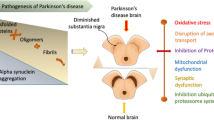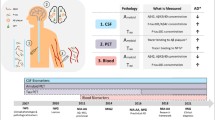Abstract
A sensitive and rapid colorimetric biosensor has been developed for determination of amyloid-β peptide (Aβ) and study of amyloidogenesis based on the high peroxidase-like activity of porous bimetallic ZnO-Co3O4 nanocages (NCs). Due to the high binding ability of Aβ monomer to ZnO-Co3O4 NCs, the catalytic activity of ZnO-Co3O4 NCs can be significantly suppressed by Aβ monomer. This finding forms the basis for a colorimetric assay for Aβ monomer detection. The detection limit for Aβ monomer is 3.5 nM with a linear range of 5 to 150 nM (R2 = 0.997). The system was successfully applied to the determination of Aβ monomer in rat cerebrospinal fluid. Critically, the different inhibition effects of monomeric and aggregated Aβ species on the catalytic activity of ZnO-Co3O4 NCs enabled the sensor to be used for tracking the dynamic progress of Aβ aggregation and screening Aβ inhibitors. Compared with the commonly used thioflavin T fluorescence assay, this method provided higher sensitivity to the formation of Aβ oligomer at the very early assembly stage. Our assay shows potential application in early diagnosis and therapy of Alzheimer's disease (AD).








Similar content being viewed by others
References
Panza F, Lozupone M, Logroscino G, Imbimbo BP (2019) A critical appraisal of amyloid-β-targeting therapies for Alzheimer disease. Nat Rev Neurol 15:73–88
Han X, He G (2018) Toward a rational design to regulate β-amyloid fibrillation for Alzheimer’s disease treatment. ACS Chem Neurosci 9:198–210
Soto C, Pritzkow S (2018) Protein misfolding, aggregation, and conformational strains in neurodegenerative diseases. Nat Neurosci 21:1332–1340
Zhang Y, Ren B, Zhang D, Liu Y, Zhang M, Zhao C, Zheng J (2020) Design principles and fundamental understanding of biosensors for amyloid-β detection. J Mater Chem B 8:6179–6196
Lee D, Kim SM, Kim HY, Kim Y (2019) Fluorescence chemicals to detect insoluble and soluble amyloid-β aggregates. ACS Chem Neurosci 10:2647–2657
Zhou Y, Liu J, Zheng T, Tian Y (2020) Label-free SERS strategy for in situ monitoring and real-time imaging of Aβ aggregation process in live neurons and brain tissues. Anal Chem 92:5910–5920
Hu J, Zheng Q (2020) Applications of mass spectrometry in the onset of amyloid fibril formation: focus on the analysis of early-stage oligomers. Front Chem 8:324
Yu Y, Yin T, Peng Q, Kong L, Li C, Tang D, Yin X (2019) Simultaneous monitoring of amyloid-β (Aβ) oligomers and fibrils for effectively evaluating the dynamic process of Aβ aggregation. ACS Sens 4:471–478
Sebastiao M, Quittot N, Bourgault S (2017) Thioflavin T fluorescence to analyse amyloid formation kinetics: measurement frequency as a factor explaining irreproducibility. Anal Biochem 532:83–86
Li M, Zhao A, Ren J, Qu X (2017) N-Methyl mesoporphyrin IX as an effective probe for monitoring Alzheimer’s disease β-amyloid aggregation in living cells. ACS Chem Neurosci 8:1299–1304
Lyu Z, Ding S, Zhang N, Zhou Y, Cheng N, Wang M, Xu M, Feng Z, Niu X, Cheng Y, Zhang C, Du D, Lin Y (2020) Single-atom nanozymes linked immunosorbent assay for sensitive detection of Aβ 1-40: a biomarker of Alzheimer’s disease. Research 2020:4724505
Qin J, Cho M, Lee Y (2019) Ferrocene encapsulated Zn zeolitic imidazole framework (ZIF-8) for optical and electrochemical sensing of amyloid-β oligomer and for the early diagnosis of Alzheimer’s disease. ACS Appl Mater Inter 11:11743–11748
Lu K, Aung T, Guo N, Weichselbaum RR, Lin W (2018) Nanoscale metal-organic frameworks for therapeutic, imaging, and sensing applications. Adv Mater 30:1707634
Yang J, Wang C, Liu X, Yin Y, Ma Y-H, Gao Y, Wang Y, Lu Z, Song Y (2020) Gallium-carbenicillin framework coated defect-rich hollow TiO2 as a photocatalyzed oxidative stress amplifier against complex infections. Adv Funct Mater 30:2004861
Liu X, Pan Y, Yang J, Gao Y, Huang T, Luan X, Wang Y, Song Y (2020) Gold nanoparticles doped metal-organic frameworks as near-infrared light-enhanced cascade nanozyme against hypoxic tumors. Nano Res 13:653–660
Zhang X, Li G, Wu D, Li X, Hu N, Chen J, Chen G, Wu Y (2019) Recent progress in the design fabrication of metal-organic frameworks-based nanozymes and their applications to sensing and cancer therapy. Biosens Bioelectron 137:178–198
Lv X, Yuan S, Xie L, Darke HF, Chen Y, He T, Dong C, Wang B, Zhang Y, Li J (2019) Ligand rigidification for enhancing the stability of metal-organic frameworks. J Am Chem Soc 141:10283–10293
Dang S, Zhu Q, Xu Q (2018) Nanomaterials derived from metal-organic frameworks. Nat Rev Mater 3:17075
Lan M, Guo R, Dou Y, Zhou J, Zhou A, Li J (2017) Fabrication of porous Pt-doping heterojunctions by using bimetallic MOF template for photocatalytic hydrogen generation. Nano Energy 33:238–246
Zhao J, Dong W, Zhang X, Chai H, Huang Y (2018) FeNPs@Co3O4 hollow nanocages hybrids as effective peroxidase mimics for glucose biosensing. Sens Actuators B Chem 263:575–584
Zhang M, Chen Z, Qin H, Yang X, Cao W, Liu S (2020) g-C3N4-Heme bound to amyloid β peptides: in-situ generation of the secondary co-reactant for dual-enhanced electrochemiluminescence assay of amyloid β detection. Electrochim Acta 361:137096
Ma Y, Yin L, Cao G, Huang Q, He M, Wei W, Zhao H, Zhang D, Wang M, Yang T (2018) Pt-Pd bimetal popcorn nanocrystals: enhancing the catalytic performance by combination effect of stable multipetals nanostructure and highly accessible active sites. Small 14:1703613
Iscen A, Brue CR, Roberts K, Kim J, Schatz GC, Meade TJ (2019) Inhibition of amyloid-β aggregation by cobalt(III) Schiff base complexes: a computational and experimental approach. J Am Chem Soc 141:16685–16695
Miura T, Suzuki K, Kohata N, Takeuchi H (2000) Metal binding modes of Alzheimer’s amyloid β-peptide in insoluble aggregates and soluble complexes. Biochemistry 39:7024–7031
Asthana S, Hazarika Z, Nayak PS, Roy J, Jha S (2018) Insulin adsorption onto zinc oxide nanoparticle mediates conformational rearrangement into amyloid-like structure with enhanced cytotoxic propensity. Biochim Biophys Acta (BBA)-gen subj 1863:153–166
Zhang C, Ren J, Xing Y, Cui M, Li N, Liu P, Wen X, Li M (2020) Fabrication of hollow ZnO-Co3O4 nanocomposite derived from bimetallic-organic frameworks capped with Pd nanoparticles and MWCNTs for highly sensitive detection of tanshinol drug. Mater Sci Eng C Mater Biol Appl 108:110214
Zhao M, Huang J, Zhou Y, Pan X, He H, Ye Z, Pan X (2013) Controlled synthesis of spinel ZnFe2O4 decorated ZnO heterostructures as peroxidase mimetics for enhanced colorimetric biosensing. Chem Commun 49:7656–7658
Van Gool WA, Kuiper MA, Walstra GJ, Wolters EC, Bolhuis PA (1995) Concentrations of amyloid β protein in cerebrospinal fluid of patients with Alzheimer’s disease. Ann Neurol 37:277–279
Deng C, Liu H, Zhang M, Deng H, Lei C, Shen L, Jiao B, Tu Q, Jin Y, Xiang L (2018) A light-up non-thiolated aptasensor for low-mass soluble amyloid-β40 oligomers at high salt concentrations. Anal Chem 3:1433–2402
Chen W, Gao G, Jin Y, Deng C (2020) A facile biosensor for Aβ40O based on fluorescence quenching of prussian blue nanoparticles. Talanta 216:120930
Liu L, Chang Y, Yu J, Jiang M, Xia N (2017) Two-in-one polydopamine nanospheres for fluorescent determination of beta-amyloid oligomers and inhibition of beta-amyloid aggregation. Sens Actuators B Chem 251:359–365
Kong L, Zhou X, Shi G, Yu Y (2020) Molybdenum disulfide nanosheets based fluorescent “off-to-on” probe for targeted monitoring and inhibition of β-amyloid oligomers. Analyst 145:6369–6377
Zhang Y, Meng S, Ding J, Peng Q, Yu Y (2019) Transition metal-coordinated graphitic carbon nitride dots as a sensitive and facile fluorescent probe for β-amyloid peptide detection. Analyst 144:504–511
Thapa A, Jett SD, Chi EY (2016) Curcumin attenuates amyloid-β aggregate toxicity and modulates amyloid-β aggregation pathway. ACS Chem Neurosci 7:56–68
Wang Z, Chang L, Klein WL, Thatcher GRJ, Venton DL (2004) Per-6-substituted-per-6-deoxy β-cyclodextrins inhibit the formation of β-amyloid peptide derived soluble oligomers. J Med Chem 47:3329–3333
Funding
Financial support was provided by the National Natural Science Foundation of China (Grant No. 21807024), the Youth Top-notch Talents Supporting Plan of Hebei Province, the Hundred Persons Plan of Hebei Province (E2018050012), Chunyu Project Outstanding Youth Fund of Hebei Medical University (No. CYYQ201904) and the Natural Science Foundation of Hebei Province (Grant No. B2020208035).
Author information
Authors and Affiliations
Corresponding authors
Ethics declarations
Conflict of interest
The authors declare that they have no conflicts of interest.
Additional information
Publisher’s note
Springer Nature remains neutral with regard to jurisdictional claims in published maps and institutional affiliations.
Supplementary information
ESM 1
(DOCX 2587 kb)
Rights and permissions
About this article
Cite this article
Zhou, X., Wang, S., Zhang, C. et al. Colorimetric determination of amyloid-β peptide using MOF-derived nanozyme based on porous ZnO-Co3O4 nanocages. Microchim Acta 188, 56 (2021). https://doi.org/10.1007/s00604-021-04705-4
Received:
Accepted:
Published:
DOI: https://doi.org/10.1007/s00604-021-04705-4




